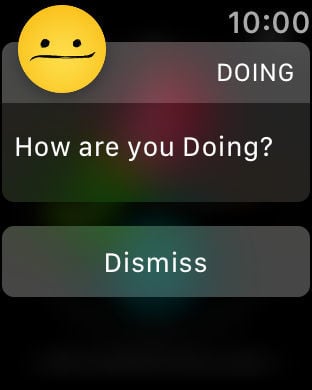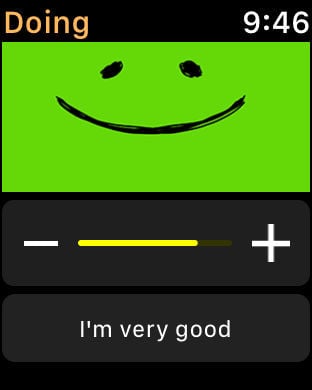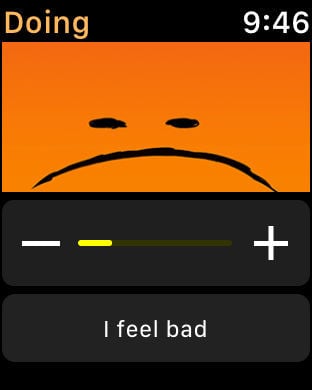You are using an outdated browser. Please
upgrade your browser to improve your experience.
Doing
Doing
Ever wanted to keep a simple diary of how you've been feeling — your ups and downs over weeks and months — wondering if your memory matches how you felt at the time?Did a doctor ask you to write down your daily pain levels, as a number from 1-10? Have you thought about tracking the ups and downs of a friend or a loved one?The most honest and helpful way to see how you're doing is to write it down in the moment. Memories of how you feel are naturally biased by things that happened after, for good or bad. Also, doctors and patients agree that a consistent scale is important, both so that patients can show consistent reporting to their doctor and so that patients can see themselves honestly as well.Doing: The Mood & Pain Tracker lets you simply and quickly follow the ups and downs of mood or pain, over any period of time. If you have an Apple Watch, logging how you feel at home or on the go is even faster and more frictionless.Many apps encourage people to spend a lot of time detailing many subtle degrees and locations of individual stresses and pains, but many would rather be living their lives than letting their pain take up even more time of their time — especially when most doctors only care about overall levels of pain on a 0-10 scale. And also many people say they'd be interested in tracking their moods, if it were easy enough. We made it simple, and even a little fun, with supportive and sympathetic expressions to follow your feelings. • Choose either levels of Pain and Mood tracking, then use a simple slider to record your feelings across a broad range with custom, hand-drawn expressions. • We use the Stanford Pain Scale, which tangible feelings to number levels — from tolerable to distressing or unbearable — to make logging more reliable and consistent. And if you just want to see simple numbers up to 10, the in-app Settings make that easy, too. • If you choose to start logging Pain, you'll get three daily update reminders, at morning, mid-day, and evening. Mood tracking only prompts you with an update notification during the day and in the evening. Don't forget to grant access to your Notifications, though the in-app Settings give you complete control over when you'll see a reminder, if at all. • After logging your first feeling, if you have an Apple Watch then you can go to your iPhone's Watch app and allow the Doing app to install its Apple WatchKit App, so you can keep tracking without slowing down. • Toggle between mood and pain logging at any point — the change takes effect the next time you tell the app how you're doing.You can't rewrite history, though, you can only record how you feel on any given morning, afternoon, or evening. If you miss an update, we leave a blank spot in the record. If you miss a day, we simply skip reporting that day to make sure you're seeing as many logged days as you can. The app has been optimized to look great on every iPhone going back as the 5s. We spoke with several doctors and patients, and over many months of development we fine-tuned the experience to people what they need to get started. We've used this app ourselves to track pain levels in loved ones for months at a time, so we're confident that it can help you do the same. We have plans to add more features, but this first release should be enough to get anyone started. In the meantime, we welcome feedback at [email protected].Keep Doing!
Features


